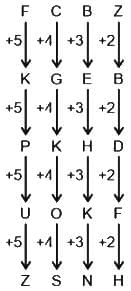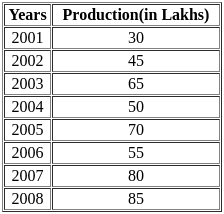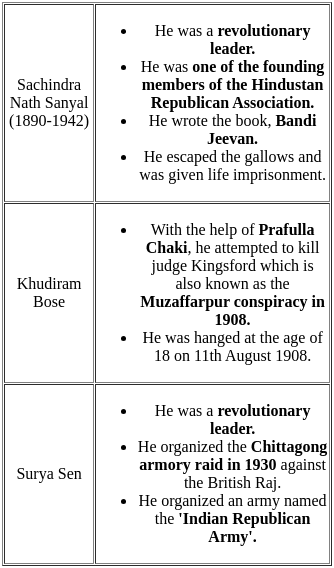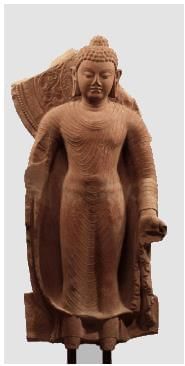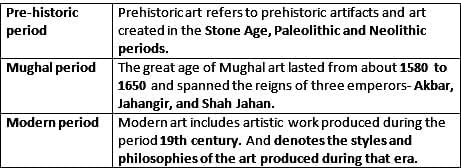MPTET Exam > MPTET Tests > MPTET Varg 1 History Mock Test - 2 - MPTET MCQ
MPTET Varg 1 History Mock Test - 2 - MPTET MCQ
Test Description
30 Questions MCQ Test - MPTET Varg 1 History Mock Test - 2
MPTET Varg 1 History Mock Test - 2 for MPTET 2025 is part of MPTET preparation. The MPTET Varg 1 History Mock Test - 2 questions and answers have been prepared
according to the MPTET exam syllabus.The MPTET Varg 1 History Mock Test - 2 MCQs are made for MPTET 2025 Exam.
Find important definitions, questions, notes, meanings, examples, exercises, MCQs and online tests for MPTET Varg 1 History Mock Test - 2 below.
Solutions of MPTET Varg 1 History Mock Test - 2 questions in English are available as part of our course for MPTET & MPTET Varg 1 History Mock Test - 2 solutions in
Hindi for MPTET course.
Download more important topics, notes, lectures and mock test series for MPTET Exam by signing up for free. Attempt MPTET Varg 1 History Mock Test - 2 | 150 questions in 150 minutes | Mock test for MPTET preparation | Free important questions MCQ to study for MPTET Exam | Download free PDF with solutions
MPTET Varg 1 History Mock Test - 2 - Question 1
दिए गए वाक्य के किस अंश में अशुद्धि है चयन कीजिए ---
मेरे स्टेशन पहुँचते ही रेलगाड़ी ने चल दिया।
मेरे स्टेशन पहुँचते ही रेलगाड़ी ने चल दिया।
Detailed Solution for MPTET Varg 1 History Mock Test - 2 - Question 1
MPTET Varg 1 History Mock Test - 2 - Question 2
Choose the correct word substitute for the following sentence:
One who collects coins as a hobby.
One who collects coins as a hobby.
Detailed Solution for MPTET Varg 1 History Mock Test - 2 - Question 2
MPTET Varg 1 History Mock Test - 2 - Question 3
In which of the following city the first bone bank of Madhya Pradesh being set up?
Detailed Solution for MPTET Varg 1 History Mock Test - 2 - Question 3
MPTET Varg 1 History Mock Test - 2 - Question 4
Which letter-cluster will replace the question mark (?) to complete the given series?
FCBZ, KGEB, ?, UOKF, ZSNH
Detailed Solution for MPTET Varg 1 History Mock Test - 2 - Question 4
MPTET Varg 1 History Mock Test - 2 - Question 5
Study the bar graph and answer the questions based on it:

In how many of the given years was the production of mobiles more than the average production of the given years?
Detailed Solution for MPTET Varg 1 History Mock Test - 2 - Question 5
MPTET Varg 1 History Mock Test - 2 - Question 6
Rajan appears to be lost in his world as he avoids eye contact with others and plays alone with a feather throughout the day. Rajan's behaviour is indicating towards which of the following disorder?
Detailed Solution for MPTET Varg 1 History Mock Test - 2 - Question 6
MPTET Varg 1 History Mock Test - 2 - Question 7
Who among the following revolutionaries escaped gallows and was given life imprisonment?
Detailed Solution for MPTET Varg 1 History Mock Test - 2 - Question 7
MPTET Varg 1 History Mock Test - 2 - Question 8
Who among the following founded the 'Hindu college' in 1817?
Detailed Solution for MPTET Varg 1 History Mock Test - 2 - Question 8
MPTET Varg 1 History Mock Test - 2 - Question 9
Which of the following is not correctly matched?
Detailed Solution for MPTET Varg 1 History Mock Test - 2 - Question 9
MPTET Varg 1 History Mock Test - 2 - Question 10
On what basis has the time span of the Harappan civilization now been fixed between 2300 B.C and 1750 B.C?
Detailed Solution for MPTET Varg 1 History Mock Test - 2 - Question 10
MPTET Varg 1 History Mock Test - 2 - Question 11
The first successful textile mill in India was established in-
Detailed Solution for MPTET Varg 1 History Mock Test - 2 - Question 11
MPTET Varg 1 History Mock Test - 2 - Question 12
Which of the newspaper was started as the evening daily?
Detailed Solution for MPTET Varg 1 History Mock Test - 2 - Question 12
MPTET Varg 1 History Mock Test - 2 - Question 13
The defeat of which ruler of Lodi dynasty by Babur marked the end of Delhi sultanate and rise of Mughal empire?
Detailed Solution for MPTET Varg 1 History Mock Test - 2 - Question 13
MPTET Varg 1 History Mock Test - 2 - Question 14
Which of the following order of succession within Mauryan Empire is correct?
Detailed Solution for MPTET Varg 1 History Mock Test - 2 - Question 14
Detailed Solution for MPTET Varg 1 History Mock Test - 2 - Question 15
Detailed Solution for MPTET Varg 1 History Mock Test - 2 - Question 16
MPTET Varg 1 History Mock Test - 2 - Question 17
As of 2018, the ancient city of Indus Valley Civilizations Suktagen Dor is situated in which of the following regions?
Detailed Solution for MPTET Varg 1 History Mock Test - 2 - Question 17
Detailed Solution for MPTET Varg 1 History Mock Test - 2 - Question 18
Detailed Solution for MPTET Varg 1 History Mock Test - 2 - Question 19
MPTET Varg 1 History Mock Test - 2 - Question 20
With reference to the history of India, consider the following Delhi Sultanate dynasties:
1. Tughlaq
2. Khilji
3. Sayyid
4. Lodi
Arrange the above in chronological order starting from the earliest?
Detailed Solution for MPTET Varg 1 History Mock Test - 2 - Question 20
Detailed Solution for MPTET Varg 1 History Mock Test - 2 - Question 21
Detailed Solution for MPTET Varg 1 History Mock Test - 2 - Question 22
MPTET Varg 1 History Mock Test - 2 - Question 23
The famous Battle of Wandiwash in 1760 was fought by the British against whom?
Detailed Solution for MPTET Varg 1 History Mock Test - 2 - Question 23
MPTET Varg 1 History Mock Test - 2 - Question 24
Which among the following edicts in the Mauryan period mentions 'Satiyaputras'?
Detailed Solution for MPTET Varg 1 History Mock Test - 2 - Question 24
Detailed Solution for MPTET Varg 1 History Mock Test - 2 - Question 25
Detailed Solution for MPTET Varg 1 History Mock Test - 2 - Question 26
MPTET Varg 1 History Mock Test - 2 - Question 27
When and where did Subhash Chandra Bose establish the 'Provisional Government of Free India' ?
Detailed Solution for MPTET Varg 1 History Mock Test - 2 - Question 27
MPTET Varg 1 History Mock Test - 2 - Question 28
Who established Mahila Arya Samaj in Maharashtra?
Detailed Solution for MPTET Varg 1 History Mock Test - 2 - Question 28
Detailed Solution for MPTET Varg 1 History Mock Test - 2 - Question 29
MPTET Varg 1 History Mock Test - 2 - Question 30
Who became the Nawab of Bengal as a result of the victory in the battle of Plassey?
Detailed Solution for MPTET Varg 1 History Mock Test - 2 - Question 30
View more questions
Information about MPTET Varg 1 History Mock Test - 2 Page
In this test you can find the Exam questions for MPTET Varg 1 History Mock Test - 2 solved & explained in the simplest way possible.
Besides giving Questions and answers for MPTET Varg 1 History Mock Test - 2, EduRev gives you an ample number of Online tests for practice
Download as PDF




